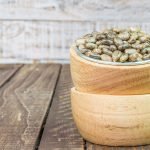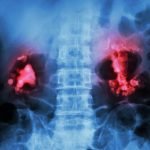SIBO as an Adaptation: A Proposed Role for Hydrogen Sulfide
Naturopathic Perspective
Greg Nigh, ND, LAc
We can not solve our problems with the same level of thinking that created them. ~ (Albert Einstein)
It is an understatement to say that the microbiome is not what we thought it was. In the past decade we have seen an explosion of information regarding the multiple regulatory roles the gut bacteria play in the body. Almost every major organ in the body is now understood to function within an “axis” with the gut. These include a gut-brain axis,1 gut-heart axis,2 gut-kidney axis,3 gut-lung axis,4 diet-microbiota-immune axis,5 gut-liver axis,6 gut-joint axis,7 and others. To designate an axis is to recognize the active role the microbiome plays in the beneficial modulation of these varied organs.
The case has been made that the microbiome constitutes an endocrine organ in itself due to its ability to produce a wide range of compounds that regulate distant cells, organs, and systems. These compounds include neurotransmitters and short-chain fatty acids, in addition to regulators of cortisol, ghrelin, leptin, secondary bile acids, and others.8 Further, the microbiome can make changes in its composition that are adaptive for the host – changes that can take place within a single day of altering the macronutrient content of the diet. It will revert back to its original composition within 2 days of ending the trial diet.9 There are numerous examples of the microbiota remodeling itself in order to utilize dietary constituents for the benefit of the host.10,11
The picture that has emerged is one of shocking complexity: these trillions of non-self organisms are sensing the changing nutritional environment12 and constantly producing signaling molecules,13 and fine-tuning and adjusting our entire physiology accordingly. It all works brilliantly until, it would seem, it doesn’t.
An Alternative View
During my first year as a student at the National College of Naturopathic Medicine (NCNM) I made it a habit to regularly meet with Dr Jared Zeff over lunch. During those walk/talk sessions I would pepper him with as many questions as I could. Once I naively asked, “How do you treat a common cold?” His reply was quick and has stuck with me since: “A cold isn’t the problem; it’s the cure.”
Regarding the microbiota, I would not suggest that there is no such thing as dysbiosis. However, when it comes to small intestinal bacterial overgrowth (SIBO), in particular, I do want to suggest that perhaps it is such a tenacious problem because we’re thinking about it wrong. Maybe the problem with the durability of our therapies is that SIBO is not the problem. Rather, maybe SIBO is actually an adaptation, a symptom-laden solution to a different problem. Bear with me.
SIBO is as much a clinically diagnosed condition as it is diagnosed through testing. Patients with the standard SIBO symptoms but without a positive SIBO breath test are, in my experience, generally classified as hydrogen sulfide-type SIBO. I am not doing SIBO testing in my practice, but this is how patients commonly arrive at my office. I don’t doubt that hydrogen sulfide is behind symptoms in those cases, and in fact I suspect it goes much further than that. Let’s consider the prime suspects behind SIBO.
As much as 1 liter of hydrogen is produced by bacteria of the microbiome each day. It is important to keep in mind that molecular hydrogen plays a strong anti-inflammatory role in the body.14 In fact, the antioxidant properties of lactulose have been attributed to its ability to promote bacterial production of molecular hydrogen,15 and the cardioprotective effect of alpha-glucuronidase inhibitors has been attributed to their ability to increase hydrogen production in the microbiota.16 Numerous articles have postulated beneficial effects from the molecular hydrogen produced by the microbiome.
Methane (CH4) has been proposed as meeting all 6 requirements to be a “gasotransmitter.”17 While the physiological role(s) of CH4 is unclear, it is well-established that microbial methane production acts as a sink for hydrogen produced “upstream” by the hydrogen-producing bacteria.18
Hydrogen sulfide (H2S) has its own interesting history. Regarded for over a century as simply a noxious gas, it eventually joined carbon monoxide and nitric oxide as the third gasotransmitter in the human body. H2S has a wide range of functions, including cognitive, neurological, gastrointestinal, cardiovascular, and others. Interestingly, its physiological effects are often opposite at low and high concentrations.19
When healthy cells are put under stress, the H2S-generating enzyme cystathionine-gamma-lyase (CSE) translocates from the cytosol to the outer mitochondrial membrane, where it uses the high mitochondrial concentration of cysteine to generate H2S. The H2S then acts within the electron transport chain to improve efficiency of ATP production.20 The point is that H2S production is vital to the cellular adaptation to physiological stress.
H2S is also generated by the microbiome through the action of the sulfur-fixing bacteria (SFB). As with CH4 production, H2S production is a means of trapping molecular hydrogen produced upstream. In fact, the SFB have a substantially stronger affinity for molecular hydrogen than do the methanogens, which means that H2S is more likely to be produced than CH4. In this way, the methanogens and the SFB maintain a functional balance with the hydrogen producers, while at the same time supplying the body with a crucial gasotransmitter.
H2S as a Sulfate Substrate
Aside from its role in both health and diseases of the gastrointestinal tract,21 there is another crucial role for H2S in the body, a role that I believe is central to SIBO’s adaptive function: H2S is a substrate for sulfate (SO4) production. Activated neutrophils can generate sulfate from H2S,22 while virtually all cells contain the enzymatic machinery to oxidize H2S to thiosulfate in a 3-step process in which sulfite is an intermediate.23 Sulfite can also likely be generated from H2S via endothelial nitric oxide synthase (eNOS).24 Sulfite, wherever it is generated, can be acted upon by the ubiquitous enzyme, sulfite oxidase, to generate SO4. Given the body’s constant need for SO4 to build heparan sulfate,25 carry out phase II detoxification, maintain proper blood viscosity,26 and many other actions, any reduction in sulfate availability necessitates a “work-around,” a compensatory shift. H2S produced in the gut via SFB, symptomatic though it may be, will diffuse into the blood and a portion of it will ultimately be oxidized to sulfite and then sulfate, via these mechanisms just described.
There are many reasons that sulfate might be in short supply, most of them, I believe, being environmental. Glyphosate, the active ingredient in many commercial herbicides, can chelate molybdenum and iron and can also impair heme synthesis – 3 consequences that would have profound impacts on the sulfate-generating heme enzyme, sulfite oxidase (SUOX).27 Sunlight exposure is another important source of sulfate production within the skin. The dramatic increase in UV-blocking sunscreens would be expected to significantly reduce the average daily sulfate production in the population.24
Heavy metals, such as tungsten, copper, cadmium, and arsenic, have also been shown to insert themselves into the molybdenum cofactor within SUOX.28
Sulfur-containing products (eg, methionine, methylsulfonylmethane [MSM], lipoic acid, glutathione, N-acetylcysteine [NAC], and others) are used as detoxification therapies for a reason. Sulfur binds, and this includes the sulfur in the amino acid, cysteine, found within serum albumin, the sulfate in heparan sulfate, and elsewhere. It will bind metals29 as well as various other pollutants.30 An unfortunate result is that the heparan sulfate proteoglycans sustain damage when assaulted by byproducts of modern life such as reactive oxygen and nitrogen species, heavy metals, and aberrant copper and iron metabolism.26,31
Genetics comes into play in this as well, though my clinical experience suggests that outside of polymorphisms in the SUOX gene, the polymorphisms associated with cystathionine-beta-synthase (CBS) and CSE are usually playing a relatively minor role in sulfate production and processing.
It is within this context that hydrogen sulfide comes to the ironic rescue. Although linked to various symptoms, its ability to be oxidized to sulfate fills a biological vacuum that must be filled for sustained physiological functioning. In this adaptation model, the many sulfur-fixing bacteria – which can convert sulfated steroids, sulfomucins, dietary cysteine, and other dietary sulfur into hydrogen sulfate – proliferate in order to supply this much-needed sulfate substrate. The sulfur fixers are not just in the genus of Desulfovibrio, but also include Staph aureus, E coli, Campylobacter jejuni, Klebsiella species, Bilophila wadsworthia, Helicobacter pylori, and over a dozen others.32 Each of these can convert different sulfur substrates into H2S, and H2S can be transformed into SO4.
I believe this is the reason that SIBO treatment that focuses on eradication of the bacteria causing the symptoms is doomed to fail, or at least has a high probability of failure. One study showed a 44% recurrence of SIBO 9 months after successful rifaximin treatment.33 Patients who take the best herbal and prescribed antibiotic protocols, eat the right diets, and take all the indicated probiotics and nutrients have a tragically high probability of symptoms resurfacing. It doesn’t make sense. However, this should be expected if the underlying issue is a sulfate deficiency, and if access to biologically useful sulfate has been limited.
I came to this adaptationist opinion rather incidentally. I was studying sulfur metabolism, seeing its connection to many maladies, and was working with sulfur issues as it related to hives, hot flashes, dermatitis, brain fog, inflammatory bowel disorders, and many other conditions. Then patients with a SIBO diagnosis started showing up to my office. I didn’t know what the breath tests meant, but with the help of the nutrition therapist I work with, I put these patients through a protocol designed to “unlock” sulfur metabolism. Lo and behold, regardless of their SIBO test results, a large majority of these patients felt dramatically better, often for the first time after years of “standard” naturopathic SIBO diet and treatment. I don’t claim any universal cure; however, I think that a significant number of SIBO patients are significantly lacking in sulfate, and therapies to restore sulfate will reduce the need for those sulfur-fixing bacteria, and thus reduce or eliminate symptoms.
Unlocking Sulfur Metabolism
Restoring metabolic sulfate production can be a tricky business in patients with an established dysbiosis, but a few therapies are almost universally helpful.
Epsom Salt Baths
RH Waring conducted a study34 with 19 healthy subjects. He found that using 400 grams (about 4 cups) of Epsom salt and soaking for 20 minutes nightly for 7 nights in a row increased sulfate levels in the blood to a steady state. I have recommended this protocol for many patients and found that this alone can sometimes dramatically improve digestive symptoms in SIBO patients. A shower rinse after the bath is recommended.
Molybdenum
This trace mineral is crucial, though it is important to keep in mind that more is not always better. Molybdenum should be dosed in an organic form, and no more than 150 mcg twice daily with food should be taken. In my practice I have tried many supplemental forms, and only a few have worked.
Hydroxocobalamin
This particular form of vitamin B12 is able to bind H2S and render it less biologically toxic.35 Clinically, I’m using this both intramuscularly and as oral therapy.
Korean Red Ginseng
This form of ginseng has been shown to suppress the activity of the CBS and CSE enzymes, thus reducing production of H2S internally.36 This can obviously play an important dual role in those SIBO patients who struggle with fatigue or who manifest other low-adrenal symptoms.
Miscellaneous
In addition to these basic therapies, I utilize a wide range of homeopathics, other nutrients (as indicated per case), and with the assistance of the nutrition therapist in my office, recommend a specific low-sulfur diet that is customized to each patient. The common goal of all therapies is to reduce the need for SFB and reestablish healthy sulfate production. Most patients have had years or decades of inflammatory bowel issues that have to be repaired, so it takes time before dietary sulfur can be brought back in as a standard part of the diet. Gut rebuilding protocols have to be utilized incrementally, and only after sulfate-supporting nutrients have been brought into the program and biologically available sulfate has been supplied.
Conclusion
SIBO is a sign of the times. The modern world is built in a way that impairs sulfur metabolism, and SIBO is a reflection of that problem. If we treat SIBO as the problem, then patients are likely to struggle with recurrence; a body’s gotta do what a body’s gotta do, and producing sulfate is what a body’s gotta do. Viewed in the light of sulfate-producing adaptation, I believe it is not only SIBO that becomes more understandable, but a wide range of modern maladies also become less mysterious.
References:
- Carabotti M, Scirocco A, Maselli MA, Severi C. The gut-brain axis: interactions between enteric microbiota, central and enteric nervous systems. Ann Gastroenterol. 2015;28(2):203-209.
- Buglioni A, Burnett Jr JC. A gut-heart connection in cardiometabolic regulation. Nat Med. 2013;19(5):534-536.
- Khoury T, Tzukert K, Abel R, et al. The gut‐kidney axis in chronic renal failure: A new potential target for therapy. Hemodial Int. 2017;21(3):323-334.
- Budden KF, Gellatly SL, Wood DL, et al. Emerging pathogenic links between microbiota and the gut–lung axis. Nat Rev Microbiol. 2017;15(1):55-63.
- Kau AL, Ahern PP, Griffin NW, et al. Human nutrition, the gut microbiome and the immune system. Nature. 2011;474(7351):327-336.
- Compare D, Coccoli P, Rocco A, et al. Gut–liver axis: the impact of gut microbiota on non alcoholic fatty liver disease. Nutr Metab Cardiovasc Dis. 2012;22(6):471-476.
- Brakenhoff LK, van der Heijde DM, Hommes DW, et al. The joint-gut axis in inflammatory bowel diseases. J Crohns Colitis. 2010;4(3):257-268.
- Clarke G, Stilling RM, Kennedy PJ, et al. Minireview: Gut microbiota: the neglected endocrine organ. Mol Endocrinol. 2014;28(8):1221-1238.
- David LA, Maurice CF, Carmody RN, et al. Diet rapidly and reproducibly alters the human gut microbiome. Nature. 2014;505(7484):559-563.
- SerinoM, Luche E, Gres S, et al. Metabolic adaptation to a high-fat diet is associated with a change in the gut microbiota. Gut. 2012;61(4):543-553.
- Haro C, Montes-Borrego M, Rangel-Zúñiga OA, et al. Two Healthy Diets Modulate Gut Microbial Community Improving Insulin Sensitivity in a Human Obese Population. J Clin Endocrinol Metab. 2016;101(1):233-242.
- Duca FA, Lam TK. Gut microbiota, nutrient sensing and energy balance. Diabetes Obes Metab. 2014;16 Suppl 1:68-76.
- Neish AS. Redox signaling mediated by the gut microbiota. Free Radic Res. 2013;47(11):950-957.
- Ghanizadeh A, Berk M. Molecular hydrogen: an overview of its neurobiological effects and therapeutic potential for bipolar disorder and schizophrenia. Med Gas Res. 2013;3(1):11.
- Chen X, Zuo Q, Hai Y, Sun XJ. Lactulose: an indirect antioxidant ameliorating inflammatory bowel disease by increasing hydrogen production. Med Hypotheses. 2011;76(3):325-327.
- Suzuki Y, Sano M, Hayashida K, et al. Are the effects of alpha‐glucosidase inhibitors on cardiovascular events related to elevated levels of hydrogen gas in the gastrointestinal tract? FEBS Lett. 2009;583(13):2157-2159.
- Wang R. Gasotransmitters: growing pains and joys. Trends Biochem Sci. 2014;39(5):227-232.
- Bures J, Cyrany J, Kohoutova D, et al. Small intestinal bacterial overgrowth syndrome. World J Gastroenterol. 2010;16(24):2978-2990.
- Wang R. Physiological implications of hydrogen sulfide: a whiff exploration that blossomed. Physiol Rev. 2012;92(2):791-896.
- Fu M, Zhang W, Wu L, et al. Hydrogen sulfide (H2S) metabolism in mitochondria and its regulatory role in energy production. Proc Natl Acad Sci U S A. 2012;109(8):2943-2948.
- Wallace JL. Physiological and pathophysiological roles of hydrogen sulfide in the gastrointestinal tract. Antioxid Redox Signal. 2010;12(9):1125-1133.
- Mitsuhashi H, Yamashita S, Ikeuchi H, et al. Oxidative stress-dependent conversion of hydrogen sulfide to sulfite by activated neutrophils. Shock. 2005;24(6):529-534.
- Hildebrandt TM, Grieshaber MK. Three enzymatic activities catalyze the oxidation of sulfide to thiosulfate in mammalian and invertebrate mitochondria. FEBS J. 2008;275(13):3352-3361.
- Seneff S, Lauritzen A, Davidson R, Lentz-Marino L. Is endothelial nitric oxide synthase a moonlighting protein whose day job is cholesterol sulfate synthesis? Implications for cholesterol transport, diabetes and cardiovascular disease. Entropy. 2012;14(12):2492-2530.
- Ricard-Blum S. Glycosaminoglycans: major biological players. Glycoconj J. 2017;34(3):275-276.
- Seneff S, Causton NJ, Nigh GL, et al. Can glyphosate’s disruption of the gut microbiome and induction of sulfate deficiency explain the epidemic in gout and associated diseases in the industrialized world? J Biol Phys Chem. 2017;17(2):53-76.
- Samsel A, Seneff S. Glyphosate, pathways to modern diseases II: Celiac sprue and gluten intolerance. Interdiscip Toxicol. 2013;6(4):159-184.
- Neumann M, Leimkühler S. Heavy metal ions inhibit molybdoenzyme activity by binding to the dithiolene moiety of molybdopterin in Escherichia coli. FEBS J. 2008;275(22):5678-5689.
- Lau SJ, Sarkar B. Inorganic mercury(II)‐binding components in normal human blood serum. J Toxicol Environ Health. 1979;5(5):907-916.
- Waidyanatha S, Troester MA, Lindstrom AB, Rappaport SM. Measurement of hemoglobin and albumin adducts of naphthalene-1,2-oxide, 1,2-naphthoquinone and 1,4-naphthoquinone after administration of naphthalene to F344 rats. Chem Biol Interact. 2002;141(3):189-210.
- Rees MD, Kennett EC, Whitelock JM, Davies MJ. Oxidative damage to extracellular matrix and its role in human pathologies. Free Radic Biol Med. 2008;44(12):1973-2001.
- Carbonero F, Benefiel AC, Alizadeh-Ghamsari AH, Gaskins HR. Microbial pathways in colonic sulfur metabolism and links with health and disease. Front Physiol. 2012;3:448.
- Lauritano EC, Gabrielli M, Scarpellini E, et al. Small intestinal bacterial overgrowth recurrence after antibiotic therapy. Am J Gastroenterol. 2008;103(8):2031-2035.
- Waring RH. Report on Absorption of magnesium sulfate (Epsom salts) across the skin. 2010. Epsom Salt Council Web site. http://www.epsomsaltcouncil.org/wp-content/uploads/2015/10/report_on_absorption_of_magnesium_sulfate.pdf. Accessed September 2, 2018.
- Fujita Y, Fujino Y, Onodera M, et al. A fatal case of acute hydrogen sulfide poisoning caused by hydrogen sulfide: hydroxocobalamin therapy for acute hydrogen sulfide poisoning. J Anal Toxicol. 2011;35(2):119-123.
- Lee S, Park JM, Jeong M, et al. Korean red ginseng ameliorated experimental pancreatitis through the inhibition of hydrogen sulfide in mice. Pancreatology. 2016;16(3):326-336.
 Greg Nigh, ND, LAc, is naturopathic physician and acupuncturist, graduating from NCNM (now NUNM) in 2001. Dr Nigh is co-owner of Immersion Health in Portland, OR, where he has a primary-care practice as well as a specialty in naturopathic oncology. He has done extensive research, writing, and speaking on the relationship between dysfunctional sulfur metabolism and the development of SIBO, inflammatory diseases, cancer, and other chronic conditions.
Greg Nigh, ND, LAc, is naturopathic physician and acupuncturist, graduating from NCNM (now NUNM) in 2001. Dr Nigh is co-owner of Immersion Health in Portland, OR, where he has a primary-care practice as well as a specialty in naturopathic oncology. He has done extensive research, writing, and speaking on the relationship between dysfunctional sulfur metabolism and the development of SIBO, inflammatory diseases, cancer, and other chronic conditions.









